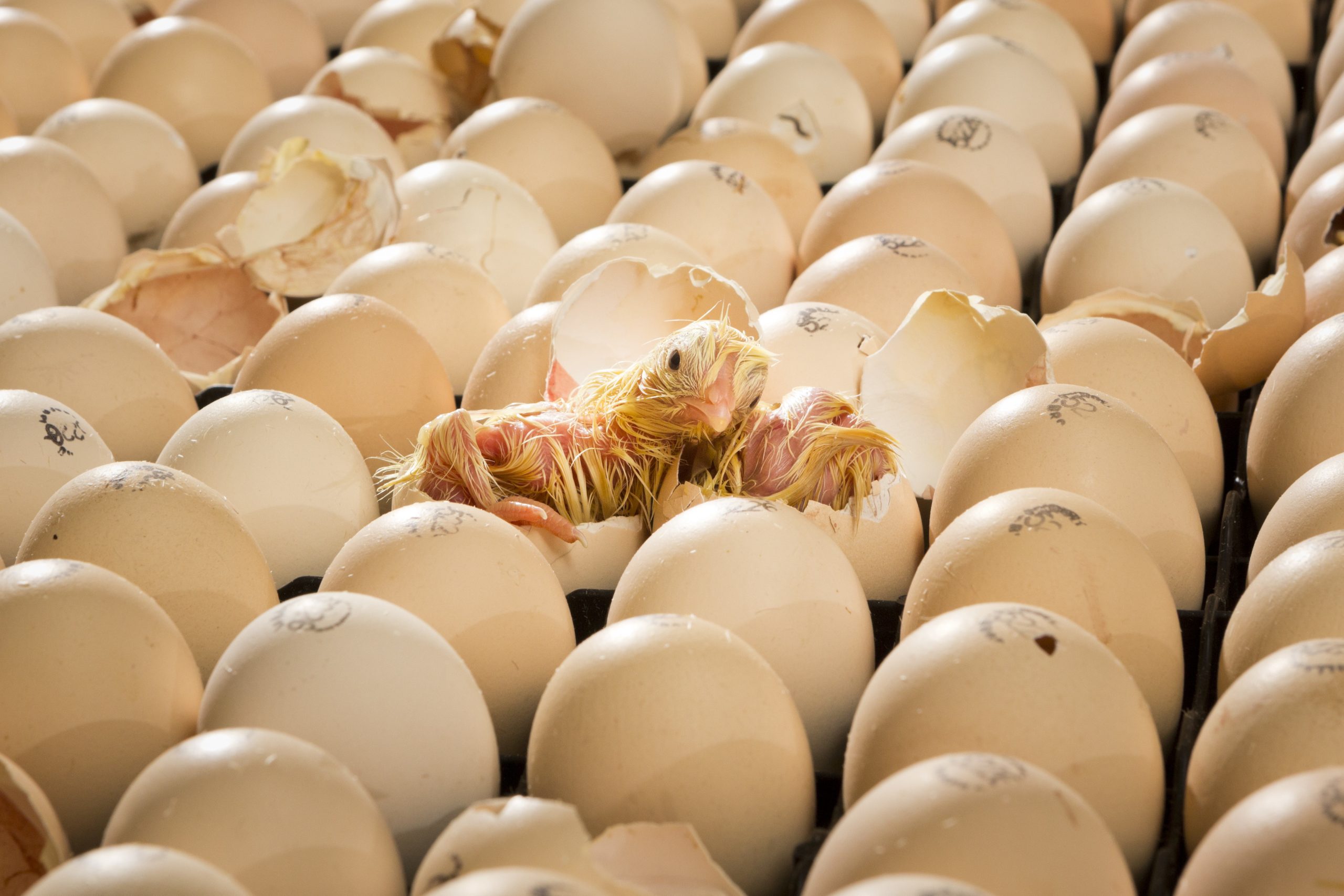Effect in-ovo feeding on growth broiler chickens

Adding nutrients when the chicken is still in the egg can increase hatching weight, growth performance, and pectoral muscle weight of broiler chickens.
In-ovo feeding (IOF), a technique of injecting exogenous nutrient solutions into the amnion of the late-term avian embryos, has been conducted as a satisfactorily feasible approach for early nutrition of poultry. Numerous studies have revealed that IOF of nutrient substances could increase energy reserves, growth performance, and breast muscle yield of poultry.
Chinese researchers therefore conducted a study to investigate the effects of in-ovo feeding (IOF) of creatine pyruvate (CrPyr) on growth performance, muscle growth, and meat quality of broiler chickens. Creatine pyruvate (CrPyr) is an organic compound which contains pyruvic acid and creatine. Pyruvate can modulate energy metabolism through the glycolytic/gluconeogenesis pathway and the Krebs cycle and creatine, can be phosphorylated as phosphocreatine, is directly involved in the muscle energy buffering system
In the trial, 960 eggs were randomly allocated into 3 treatments: (1) non-injected control, (2) saline treatment injected with 0.6 mL 0.75% physiological saline, and (3) CrPyr treatment injected with 0.6 mL 0.75% physiological saline containing 12 mg CrPyr/egg on 17.5 d of incubation. After hatching, 120 male chickens per treatment were selected and randomly assigned to 8 cages for a 42-d feeding trial. The selected chickens had body weight close to the average of their pooled group.
It was shown that no difference in hatchability was observed among treatments, whereas the hatching weight, body weight gain, and feed intake in CrPyr treatment were greater than those of the control and saline treatments (P <0.05). the broiler chickens in crpyr treatment gained greater total and relative weight, myofiber diameter, and cross-sectional area of pectoral muscle on 21 and 42 d (p>< 0.05). However, there were no differences on the concentrations of creatine and phosphocreatine in the pectoral muscle of broiler chickens on 21 and 42 d, as well as the meat quality among treatments.
Conclusion
In conclusion, IOF of CrPyr on 17.5 d of incubation increased the hatching weight, growth performance, and pectoral muscle weight of broiler chickens. Nevertheless, IOF of CrPyr did not cause any changes in meat quality characteristics of the pectoral muscle on 42 d post-hatch. It is possible that IOF of CrPyr can be applied to poultry industry in terms of increasing the BW and pectoral muscle yield of chickens at market age.
Source: Journal of Livestock Science











